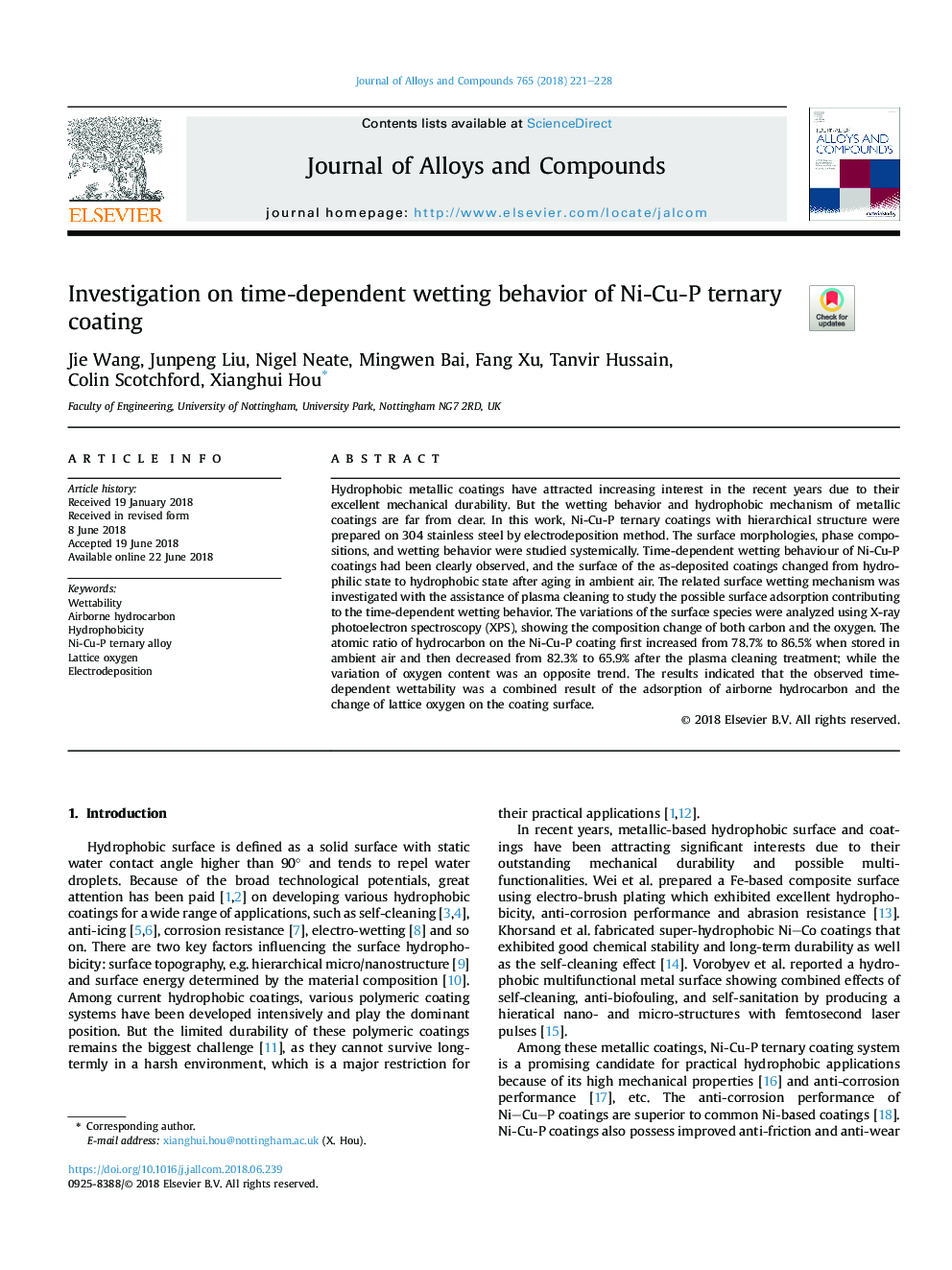| Article ID | Journal | Published Year | Pages | File Type |
|---|---|---|---|---|
| 7990488 | Journal of Alloys and Compounds | 2018 | 8 Pages |
Abstract
Hydrophobic metallic coatings have attracted increasing interest in the recent years due to their excellent mechanical durability. But the wetting behavior and hydrophobic mechanism of metallic coatings are far from clear. In this work, Ni-Cu-P ternary coatings with hierarchical structure were prepared on 304 stainless steel by electrodeposition method. The surface morphologies, phase compositions, and wetting behavior were studied systemically. Time-dependent wetting behaviour of Ni-Cu-P coatings had been clearly observed, and the surface of the as-deposited coatings changed from hydrophilic state to hydrophobic state after aging in ambient air. The related surface wetting mechanism was investigated with the assistance of plasma cleaning to study the possible surface adsorption contributing to the time-dependent wetting behavior. The variations of the surface species were analyzed using X-ray photoelectron spectroscopy (XPS), showing the composition change of both carbon and the oxygen. The atomic ratio of hydrocarbon on the Ni-Cu-P coating first increased from 78.7% to 86.5% when stored in ambient air and then decreased from 82.3% to 65.9% after the plasma cleaning treatment; while the variation of oxygen content was an opposite trend. The results indicated that the observed time-dependent wettability was a combined result of the adsorption of airborne hydrocarbon and the change of lattice oxygen on the coating surface.
Related Topics
Physical Sciences and Engineering
Materials Science
Metals and Alloys
Authors
Jie Wang, Junpeng Liu, Nigel Neate, Mingwen Bai, Fang Xu, Tanvir Hussain, Colin Scotchford, Xianghui Hou,
